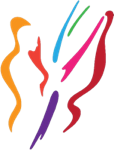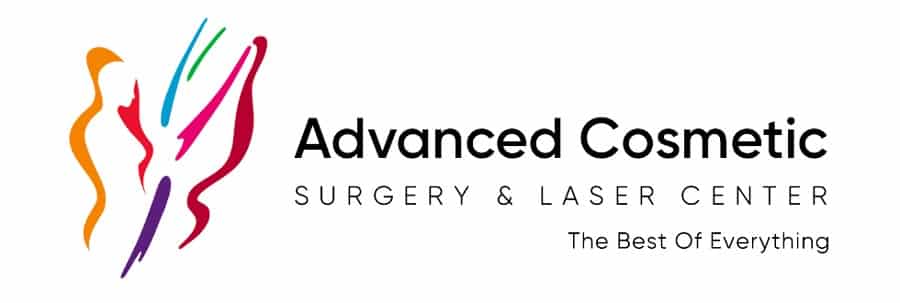Rhinoplasty Q&A with Dr. Jon Mendelsohn
Discover everything you need to know about rhinoplasty—from surgical options to recovery and results. Dr. Mendelsohn shares insights from his decades of experience in facial plastic surgery to help you feel informed and confident in your decision.
Set 1: Curious Beginner
What is rhinoplasty and what does it involve?
Rhinoplasty, or a “nose job,” reshapes the nose to improve its appearance and/or function. This may include refining the bridge, adjusting the nostrils, correcting asymmetry, or addressing breathing issues. I take a custom approach, always aiming for a natural-looking result that harmonizes with your face.
How do I know if I’m a good candidate for rhinoplasty?
If you’re unhappy with your nose’s appearance or have breathing issues, you’re likely a good candidate. We evaluate anatomy, maturity of facial features, and overall health. A personalized consultation helps ensure we’re aligned on goals and realistic expectations.
Is the procedure just cosmetic or can it also help with breathing?
Many rhinoplasties I perform include functional improvements like correcting a deviated septum or improving airflow through nasal valves. Both aesthetics and breathing are equally important for successful outcomes.
What does recovery typically look like?
Most patients have a splint for a week, minimal bruising, and no packing. Swelling diminishes within 1–2 weeks, and full refinement continues over several months. The procedure is easier to recover from than most expect.
Will my nose look natural after surgery?
Yes. My goal is a nose that looks like it belongs on your face—subtle and in balance with your features. Most people will notice you look better but won’t know exactly why.
Are there different types of rhinoplasty procedures?
Yes—open, closed, functional, revision, and ethnic rhinoplasties. Open gives more access for detailed changes; closed is used for simpler refinements. Each is tailored to your anatomy and goals.
How long do the results last?
Rhinoplasty results are typically permanent. While your nose continues to age like the rest of your face, the structural improvements made during surgery last a lifetime.
What risks or side effects should I know about?
Risks include bruising, infection, temporary breathing issues, or dissatisfaction. Careful planning, clear communication, and meticulous technique help minimize complications.
Is there a difference between male and female rhinoplasty?
Yes—gender, ethnicity, and personal features are all considered. Male noses often have stronger lines, while female noses tend toward softer contours. I tailor every plan to fit the individual’s goals and proportions.
How do I begin the process of getting a consultation?
Call or request online to schedule. We’ll take photos, use digital imaging to review your goals, and create a no-pressure, collaborative plan. You’ll also receive a complimentary copy of my rhinoplasty book co-authored with Dr. Paul Nassif.
Set 2: Cautious Explorer
I’ve heard rhinoplasty results can be unpredictable — how do I avoid that?
Predictability comes from experience, planning, and communication. We use imaging tools and detailed consultations to align expectations. I typically achieve within 5% of the predicted image, thanks to nearly 30 years of experience.
How do you ensure that the nose will fit my face?
I evaluate the nose in relation to your cheeks, jaw, chin, and forehead. Using digital imaging, we plan changes that feel proportional and balanced. Subtle enhancements bring harmony—not distraction—to your face.
What are the most common complications and how are they handled?
Common issues include minor swelling, congestion, and very rarely asymmetry. I personally monitor your healing and address any concerns promptly. Most are temporary and manageable.
I’m worried about scarring. Will there be visible scars?
Open rhinoplasty involves a small incision between the nostrils—about 3–4mm—that heals nearly invisibly. Closed rhinoplasty has no external scars. My technique ensures minimal, well-hidden markings.
Can I see examples of your past work on noses like mine?
Yes. During consultation, we’ll review photos of patients with similar concerns, backgrounds, and goals. We also have video recoveries in our TrueSelfie gallery and on our YouTube channel.
What happens if I don’t like the results?
Our communication before surgery is key. But if you’re unhappy, we’ll work through options together. I also perform revision rhinoplasty when necessary. You will never be left unsupported.
How long does it take to fully heal and see the final result?
You’ll look improved in the first few weeks. Tip refinement and final definition can take up to a year. We follow up regularly to monitor healing over the long term.
How is revision rhinoplasty different from the initial procedure?
It’s more complex due to scar tissue or altered anatomy. I may use cartilage grafts and take more time with planning. I’ve helped many patients improve previous outcomes through careful revision.
Are non-surgical options worth considering first?
Fillers may work for minor contour issues but don’t fix functional problems. We’ll discuss what’s best based on your needs. Fillers are temporary and carry vascular risks.
What questions should I ask during my consultation to feel confident?
Ask about approach (open vs. closed), revision rates, examples of similar patients, function vs. form balance, and the week-by-week recovery process. The more you know, the more confident you’ll feel.
Set 3: Informed Decision-Maker
What surgical techniques do you prefer for rhinoplasty — open or closed — and why?
I use both, but open rhinoplasty is preferred in about 90% of cases for visibility and control. The small external incision is a minor trade-off for precision and long-term satisfaction.
How do you approach ethnic or structural preservation in rhinoplasty?
I honor your ethnic identity while refining your features. For patients of diverse backgrounds, I use techniques that maintain structure and balance while addressing individual goals.
What distinguishes your method from other top surgeons?
I emphasize function, structure, and artistry. I also prioritize communication and bring the entire surgical team into goal alignment using pre-op images in the OR. No rushing—only results.
Can you walk me through a typical rhinoplasty procedure — from pre-op to post-op care?
Pre-op includes planning, imaging, and labs. Surgery is performed with light IV sedation in our AAAHC-accredited facility. You’ll wear a splint for one week and follow a tailored recovery plan. We’re with you from day one through final refinement.
How are patient expectations and psychological readiness evaluated?
We discuss your motivations and desired outcome thoroughly. I encourage involving a loved one in consultations and ensure you’re emotionally ready before proceeding. Mental and emotional preparation leads to greater satisfaction.
What kind of anesthesia is used and who administers it?
We use IV sedation—safe and effective. A certified anesthetist administers and monitors you the entire time while I focus solely on the surgery. You’ll wake up quickly and comfortably.
What’s your revision rate, and what steps do you take to minimize the need for revisions?
My revision rate is under 1%, well below the national average. I achieve this through conservative techniques, structure preservation, and clear communication. If revision is needed, I approach it carefully and compassionately.
Can you provide a breakdown of surgical fees, facility costs, and post-op support included?
Yes. All-inclusive pricing includes surgeon, anesthesia, facility, photos, imaging, and all follow-up care. No hidden fees—just transparent support from start to finish.
Do you use digital imaging or morphing to simulate results before surgery?
Yes, we use morphing tools during your consult. These aren’t guarantees, but they help align our vision and serve as a guide during surgery.
What post-operative support and follow-up care do you provide, especially in the first 90 days?
We offer follow-ups at day 1, day 7, and regular intervals up to 1 year. You’ll have 24/7 access to our team, a patient portal for remote updates, and long-term check-ins to ensure comfort and results.


Recent Comments